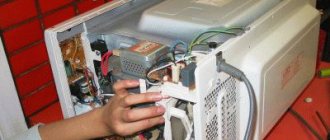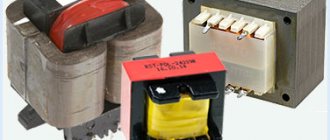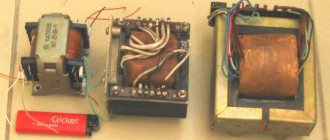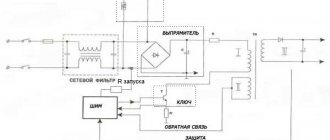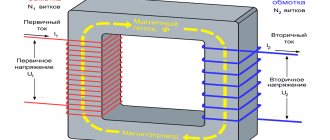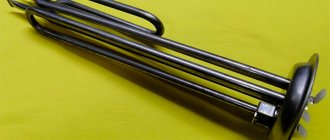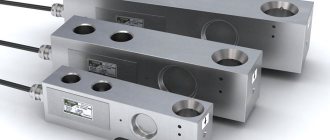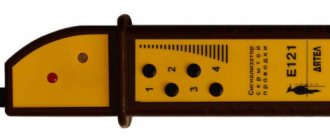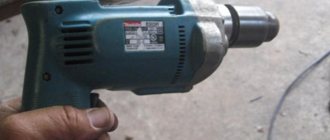A microwave transformer is an important link in the chain that generates microwave radiation. This is a converter of the mains voltage to the value supplied to the magnetron input. A high-voltage converter often causes a microwave oven to break down.
Checking the transformer for operability is a mandatory item in the list of technical diagnostic measures to determine the causes of the malfunction. Since we are talking about high voltages, independent intervention is only possible if all safety measures are observed.
Where can I get high voltage?
Food in microwave ovens is heated by the operation of ultra-high-frequency waves. Microwaves are generated by a special emitter - a magnetron. To operate within the specified characteristics, it needs a high voltage - 2,000 V. This is almost an order of magnitude higher than what a household electrical network provides (220 V).
Where do kilovolts come from? They are created at the output of the secondary winding of the high-voltage converter.
Important! A microwave oven, even disconnected from the power supply, can cause an electric shock (U up to 5,000 V).
The principle of operation of a microwave oven and its design
By irradiating various objects with centimeter waves, scientists discovered one interesting feature: at a frequency of 2.45 GHz, the rays are capable of loosening microparticles of water, which is accompanied by the release of a significant amount of heat. And since food products contain a large amount of liquid, this specific property began to be used for heating and cooking.
Such a magnetic field is created by a special vacuum lamp - magnetron . To protect the human body, which is 80% water, this emitter was hidden in a metal container, the material and design of which does not allow waves to pass through, capable of bringing any liquid to a boiling point in a very short time. Isolation of the magnetic field in a narrow space only made it possible to increase the productivity of such a device. After all, heat stopped dissipating and only began to accumulate, accelerating the heating process. For a more uniform impact of waves on the product, a table rotating around its axis was installed inside.
The microwave chamber is equipped with a glass door so that you can observe the cooking process. The glass is coated with a material that reflects radiation. And to remove steam and excess heat, holes are provided that do not allow microwave waves to pass out.
Types of high voltage converters
Elements of the converter installed in the microwave oven:
- magnetic circuit;
- frame;
- primary winding;
- two secondary windings.
U = 220 V is supplied to the primary winding. The incandescent filament is powered from the secondary windings. The first of the two secondary windings is made of heavy gauge wire. U at the output is approximately 3 V. At the output of the second winding - variable high U = 4 kV.
Microwave ovens of different brands use converting devices from different manufacturers. The converters do not look the same and have different characteristics. They differ:
- power;
- output voltage of secondary windings;
- the number of turns in the coils and the cross-section of the wire;
- dimensions;
- method of fastening.
The secondary coil, like one of the emitter terminals, is connected to the housing.
This is Vladimir, author of the OnlyKit channel.
Transformer no-load experience
Today I’ll briefly tell you how to assemble spot welding for batteries from a microwave transformer. And detailed video instructions will be at the end of the article.
So, first of all, we need a microwave. Any, working or broken, old or new, it doesn’t matter. Of course I'll take the broken one.
Photos taken from the video of the channel author.
Now I disassemble it and remove only one part, this is the transformer.
Photos taken from the video of the channel author.
This transformer is a step-up transformer and has a primary and secondary winding.
To assemble the welding machine, you will need to remove the factory secondary winding as your own will then be wound.
I removed it with a hacksaw and drill. The first step was to remove the visible parts of the winding using a hacksaw.
Photos taken from the video of the channel author.
After filing, I drill out the secondary from the body.
Photos taken from the video of the channel author.
If you repeat such actions, be sure to be careful not to damage the primary winding!
After completely removing the secondary winding, you will be left with metal plates (shunts). At this point I can’t tell you specifically whether you need to delete them or not. Maybe the home-made people are divided into two parts, some say that it needs to be removed, others, on the contrary, it is not necessary. I personally pulled them out.
The next component will be the cable, you need to take at least a cross-section of 16 mm², it’s better to take a meter and a half, because I bought one meter and everything was end-to-end.
And now you need to make a secondary winding from this cable. The first time I made two turns and got an output voltage of 1.7 Volts.
Photos taken from the video of the channel author.
The output voltage is not life-threatening, but the input is 220 volts. BE VERY CAREFUL! Since this voltage is dangerous to life, insulate all exposed wires.
And so we insert the wire. It turns out like this:
Photos taken from the video of the channel author.
Now we need terminals. We press or solder them onto the ends of the wire. I used a hammer
Photos taken from the video of the channel author.
Next you need to make the electrodes. I took a thick single-core wire. The thicker the better. You can even use a copper tip from a soldering iron.
I took two pieces and screwed them using a bolt and nut to the ends of the wire onto the terminals.
Photos taken from the video of the channel author.
Now I supply 220 volts to the primary winding and you can check, but before that you need to break one wire at 220 with a button. I took this one from the same microwave:
Photos taken from the video of the channel author.
Now I turn to the tests.
Photos taken from the video of the channel author.
To be honest, the first time the device did not live up to my expectations. When pressed briefly, a process occurred, but it was weak and nothing was welded. But with a long press, the result was much better, but the metal was already starting to overheat.
Photos taken from the video of the channel author.
Using an 18650 battery, the welding machine performed much better. The plate held tightly after welding.
Photos taken from the video of the channel author.
I achieved the result I needed. Of course, it needs to be improved, but this will happen further.
Spot welding assembly video:
This is where I end the article. I will answer adequate comments, I won’t even waste time on the rest. I also want to ask for your support! Likes, comments and subscriptions are welcome.
What types of malfunctions occur?
You need to check the transformer in two cases: when the stove is not working well and when it is not working at all. You can suspect a malfunction of this particular element based on the following signs:
- The microwave oven makes an unusually loud noise;
- food placed in the chamber is not heated or only slightly heated;
- When working, it smells like burnt insulation and the equipment smokes.
If at least one of the listed symptoms appears, it is better not to turn on the device until the problem is resolved. Turning on a faulty stove can worsen the breakdown.
One of the most common causes of electrical equipment failure is power surges. If there is a suspicion that the device is faulty due to changes in the network, urgent repairs are necessary. However, it is possible that during repair work a manufacturing defect will be discovered.
Important detail
To understand how you can correct the situation if the cause of the breakdown is a high-voltage diode, you need to understand what it is.
A high-voltage diode has the form of a large number of connections that connect the diodes in series into one element. This includes conventional rectifier diodes. They are made using the same technology and are part of a single body. During the assembly process, capacitors and resistors are not used to equalize the voltage. As a result, this diode has a nonlinear current-voltage characteristic. Therefore, its resistance depends on the applied voltage. Due to this design feature, it is quite difficult to check the functionality of this component of the microwave oven.
Note! This element cannot be checked by a tester. Using a tester in this situation will not give an accurate result. The device will not show either reverse or forward resistance. Here you can use, for example, a multimeter. Its resistance should be measured in forward and reverse directions.
To do this, the multimeter should be switched to R x 1000 mode. Here, when the “+” output of the multimeter is connected to the anode on the diode, resistance is measured in the forward direction. As a result, the device should show the final value for resistance. If the connection goes to “-”, then the measurement is carried out in the opposite direction. In this case it should register infinity.
Causes of malfunctions
The converter fails most often due to:
- Wire break. The wire of one of the windings may break.
- Short circuit in the windings. This can happen in one coil or both.
- A break or short circuit in the magnetron coil.
The magnetic core of the converter is assembled from steel plates. If the plates peel off, the machine will make noise. It is necessary to find out the power of the transformer and replace it. Such global breakdowns can be easily identified by eye, but they do not happen often. The overwhelming majority of problems are still caused by coils.
Destruction of the cap on the magnetron


